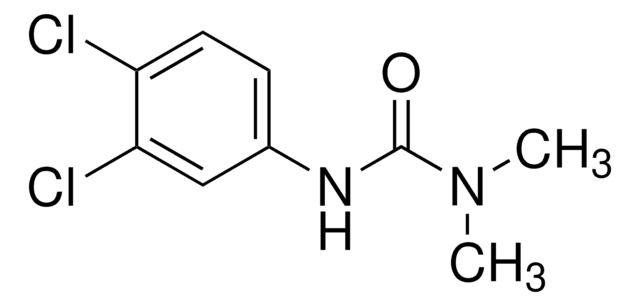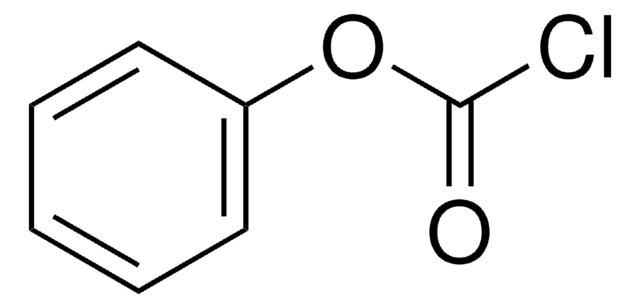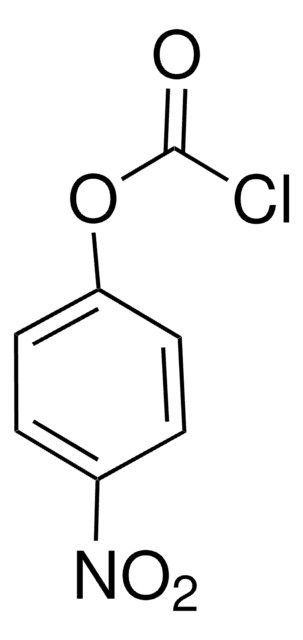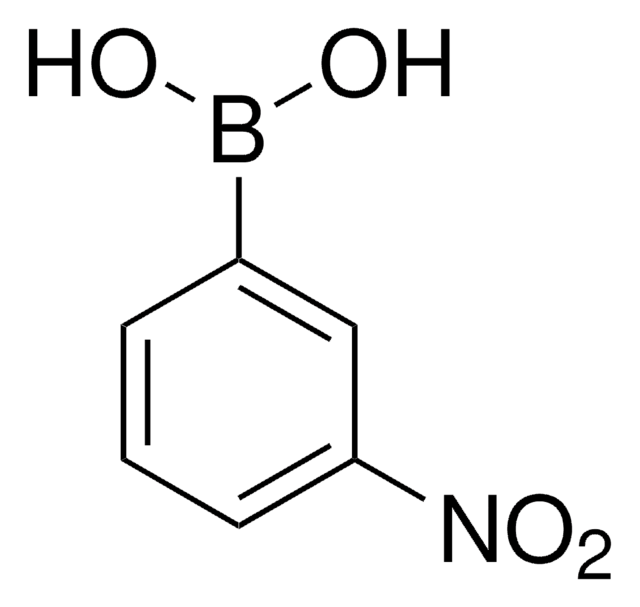271993
2,5-Dibromo-6-isopropyl-3-methyl-1,4-benzoquinone
Sinónimos:
2,5-Dibromo-3-methyl-6-isopropyl-p-benzoquinone, Dibromothymoquinone
Iniciar sesiónpara Ver la Fijación de precios por contrato y de la organización
About This Item
Fórmula lineal:
(CH3)2CHC6Br2(CH3)(=O)2
Número de CAS:
Peso molecular:
321.99
Número CE:
Número MDL:
Código UNSPSC:
12171500
ID de la sustancia en PubChem:
NACRES:
NA.47
Productos recomendados
Formulario
powder, crystals or chunks
Nivel de calidad
mp
70-72 °C (lit.)
aplicaciones
diagnostic assay manufacturing
hematology
histology
temp. de almacenamiento
room temp
cadena SMILES
CC(C)C1=C(Br)C(=O)C(C)=C(Br)C1=O
InChI
1S/C10H10Br2O2/c1-4(2)6-8(12)9(13)5(3)7(11)10(6)14/h4H,1-3H3
Clave InChI
GHHZELQYJPWSMG-UHFFFAOYSA-N
Categorías relacionadas
Aplicación
2, 5-Dibromo-6-isopropyl-3-methyl-1, 4-benzoquinone has been used as a metabolic inhibitor of violaxanthin (V) cycle of Pelvetia canaliculata and is used as a photosynthetic electron transport chain (pETC) inhibitor.
Acciones bioquímicas o fisiológicas
2, 5-Dibromo-6-isopropyl-3-methyl-1, 4-benzoquinone acts as an inhibitor of respiratory and photosynthetic processes.
Código de clase de almacenamiento
11 - Combustible Solids
Clase de riesgo para el agua (WGK)
WGK 3
Punto de inflamabilidad (°F)
Not applicable
Punto de inflamabilidad (°C)
Not applicable
Equipo de protección personal
dust mask type N95 (US), Eyeshields, Gloves
Elija entre una de las versiones más recientes:
¿Ya tiene este producto?
Encuentre la documentación para los productos que ha comprado recientemente en la Biblioteca de documentos.
Deepak Venkanna et al.
Frontiers in plant science, 8, 1347-1347 (2017-08-22)
The protein superfamily of short-chain dehydrogenases/reductases (SDR), including members of the atypical type (aSDR), covers a huge range of catalyzed reactions and
Yuuki Sakai et al.
Planta, 221(6), 823-830 (2005-04-06)
In epidermal cells of the aquatic angiosperm Vallisneria gigantea Graebner, high-intensity blue light (BL) induces the avoidance response of chloroplasts. We examined simultaneous BL-induced changes in the configuration of actin filaments in the cytoplasmic layers that face the outer periclinal
Shan Gao et al.
Journal of experimental botany, 63(12), 4349-4358 (2012-03-23)
Porphyra yezoensis, a representative species of intertidal macro-algae, is able to withstand periodic desiccation at low tide but is submerged in seawater at high tide. In this study, changes in photosynthetic electron flow in P. yezoensis during desiccation and re-hydration
Ireneusz Slesak et al.
Plant & cell physiology, 44(6), 573-581 (2003-06-27)
Mesembryanthemum crystallinum, a facultative halophyte and C(3)-Crassulacean acid metabolism (CAM) intermediate plant, has become a favoured plant for studying stress response mechanisms during C(3)-CAM shifts. One hour of exposure to excess light (EL) caused inhibition of photosynthetic electron transport in
The KaiA protein of the cyanobacterial circadian oscillator is modulated by a redox-active cofactor.
Thammajun L Wood et al.
Proceedings of the National Academy of Sciences of the United States of America, 107(13), 5804-5809 (2010-03-17)
The circadian rhythms exhibited in the cyanobacterium Synechococcus elongatus are generated by an oscillator comprised of the proteins KaiA, KaiB, and KaiC. An external signal that commonly affects the circadian clock is light. Previously, we reported that the bacteriophytochrome-like protein
Nuestro equipo de científicos tiene experiencia en todas las áreas de investigación: Ciencias de la vida, Ciencia de los materiales, Síntesis química, Cromatografía, Analítica y muchas otras.
Póngase en contacto con el Servicio técnico







